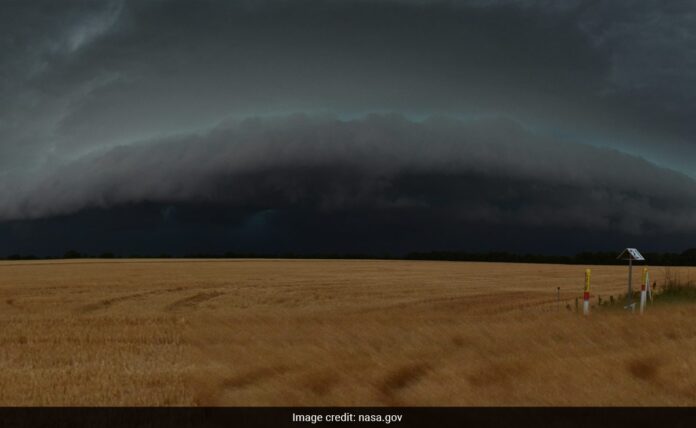
The shelf clouds is a unique weather phenomenon. (Representational Pic)
The entire north India is experiencing heavy rain, with alerts issued by regional weather offices warning of further rainfall. According to India Meteorological Department (IMD), the intense spell of rain in the region, including Delhi, is due to an interaction of a western disturbance and monsoonal winds. Uttarakhand is the worst affected as the IMD has issued a red alert, warning that the hill state will experience extreme rainfall. And now, a video claiming to show shelf clouds in Uttarakhand’s Haridwar has appeared on social media.
The video shows the intimidating appearance of the clouds is gaining traction on social media. At a time when there is severe rainfall in a region, such videos regularly appear on social media claiming the extreme occurrence. But there is no way to confirm the video videos.
NDTV cannot confirm the authenticity of the video. It appears to have been first posted on July 9 by a user called Anindya Singh, who said the clip was shared with him by a friend.
Shared by a friend. Shot today near Haridwar. Spectacular shelf cloud.
#Manali#Storm#Rain#thunderstorm#shelfcloudpic.twitter.com/he9KXg9qse
— Anindya Singh (@Anindya_veyron) July 9, 2023
The spectacular cloud formation has, however, attracted the interest of social media users who want to know about the unique cloud formation.
What are shelf clouds?
According to US government’s National Weather Service (NWS) of the US government, shelf clouds – also known as Arcus clouds – are often associated with powerful storm systems, and many times they are reported as wall clouds, funnel clouds, or rotation.
These clouds are sometimes seen beneath cumulonimbus clouds, the dense, towering vertical cloud that cause intense rain.
How are shelf clouds formed?
According to UK Met Office, when a cold downdraft from a cumulonimbus cloud reaches the ground, the cold air may spread rapidly along the ground, pushing existing warm moist air upwards. As this air rises, water vapour condenses into the patterns associated with shelf clouds.
The new cloud may roll if it experiences different wind directions above and below, the agency further said.
Click for more trending news
Views: 0











